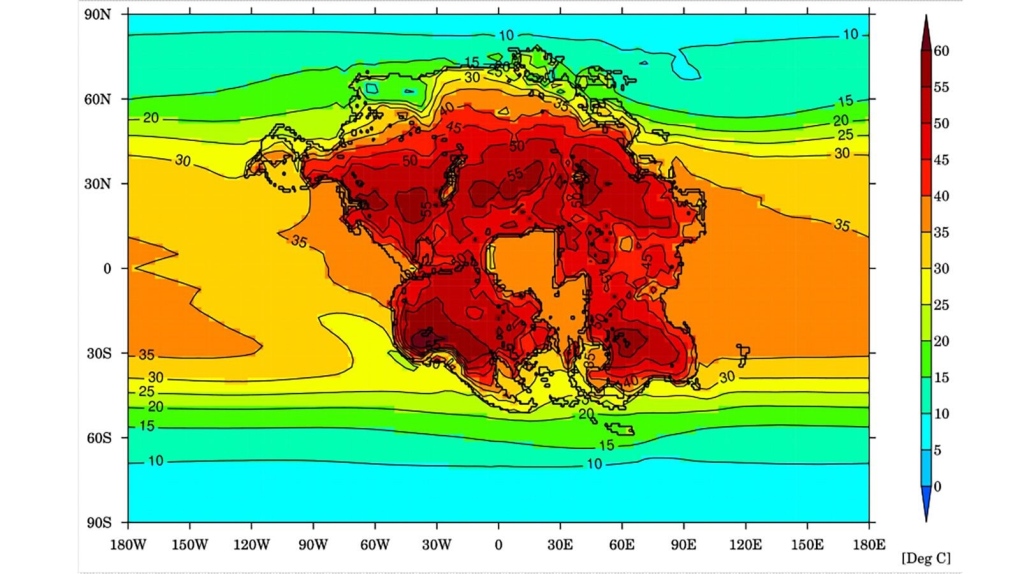The formation of a new “supercontinent” could wipe out humans and all other mammals still alive in 250 million years, researchers have predicted.
Using the first-ever supercomputer climate models of the distant future, scientists from the University of Bristol in the United Kingdom predicted how climate extremes would intensify after the world’s continents merge to form one supercontinent, Pangea Ultima, in around 250 million years.
They found it would be extremely hot, dry and virtually uninhabitable for humans and mammals, who are not evolved to cope with prolonged exposure to excessive heat.
Researchers simulated temperature, wind, rain and humidity trends for the supercontinent and used models of tectonic plate movement, ocean chemistry and biology to calculate carbon dioxide levels.
They found that not only would the formation of Pangea Ultima lead to more regular volcanic eruptions, spewing carbon dioxide into the atmosphere and warming the planet, but the sun would also become brighter, emitting more energy and warming the Earth further, experts noted in the paper, published Monday in the journal Nature Geoscience.
“The newly-emerged supercontinent would effectively create a triple whammy comprising the continentality effect, hotter sun and more CO2 in the atmosphere,” Alexander Farnsworth, senior research associate at the University of Bristol and lead author of the paper, said in a release Monday.
“Widespread temperatures of between 40 to 50 degrees Celsius (104 to 122 degrees Fahrenheit) and even greater daily extremes, compounded by high levels of humidity would ultimately seal our fate. Humans – along with many other species – would expire due to their inability to shed this heat through sweat, cooling their bodies,” Farnsworth added.
The increased heat, Farnsworth noted, would create an environment without food or water sources for mammals.
While there are large uncertainties when making predictions so far into the future, the scientists said that the picture appears “very bleak,” with only around 8% to 16% of land on the supercontinent habitable for mammals.
Carbon dioxide could be double current levels, according to the report, although that calculation was made on the assumption that humans stop burning fossil fuels now, “otherwise we will see those numbers much, much sooner,” Benjamin Mills, a professor of Earth system evolution at the University of Leeds and a report co-author, said in the release.
This grim outlook is no excuse for complacency when it comes to tackling today’s climate crisis, the report authors warned. Human-caused climate change is already resulting in millions of deaths around the world every year.
“It is vitally important not to lose sight of our current climate crisis, which is a result of human emissions of greenhouse gases,” co-author Eunice Lo, research fellow in climate change and health at the University of Bristol, said in the release.
“While we are predicting an uninhabitable planet in 250 million years, today we are already experiencing extreme heat that is detrimental to human health. This is why it is crucial to reach net-zero emissions as soon as possible,” Lo added.
Climate change is on course to transform life on Earth, with billions of people and other species due to reach points where they can no longer adapt unless global warming is dramatically slowed, according to a major UN-backed report published last year.
Scientists have warned for decades warming needs to stay below 1.5 degrees Celsius above pre-industrial levels, with the window to cut our reliance on fossil fuels and avoid catastrophic changes that would transform life as we know it rapidly closing.
The last mass extinction occurred some 66 million years ago, when an asteroid slammed into Earth and killed off the dinosaurs and most life on the planet.










































